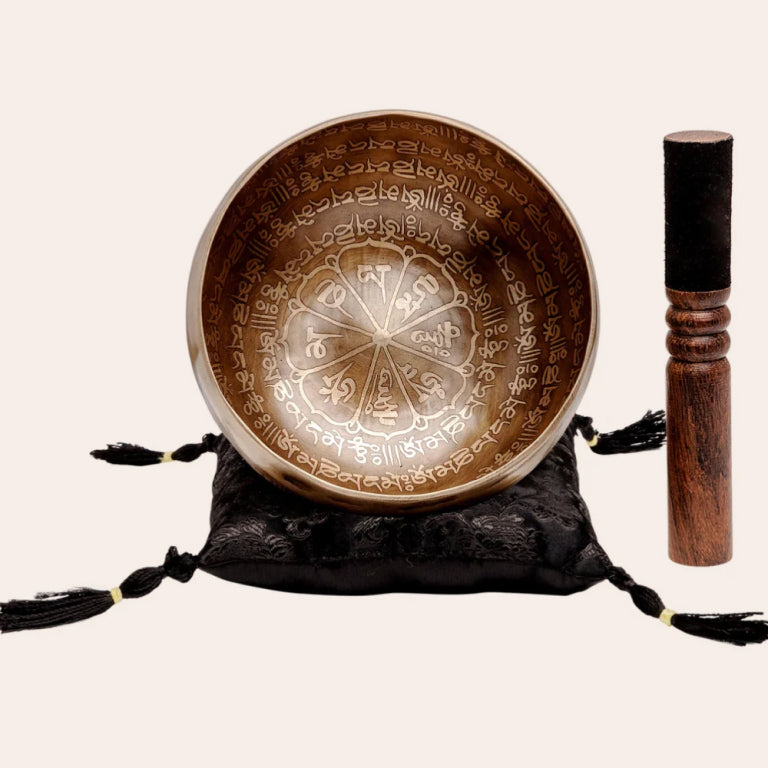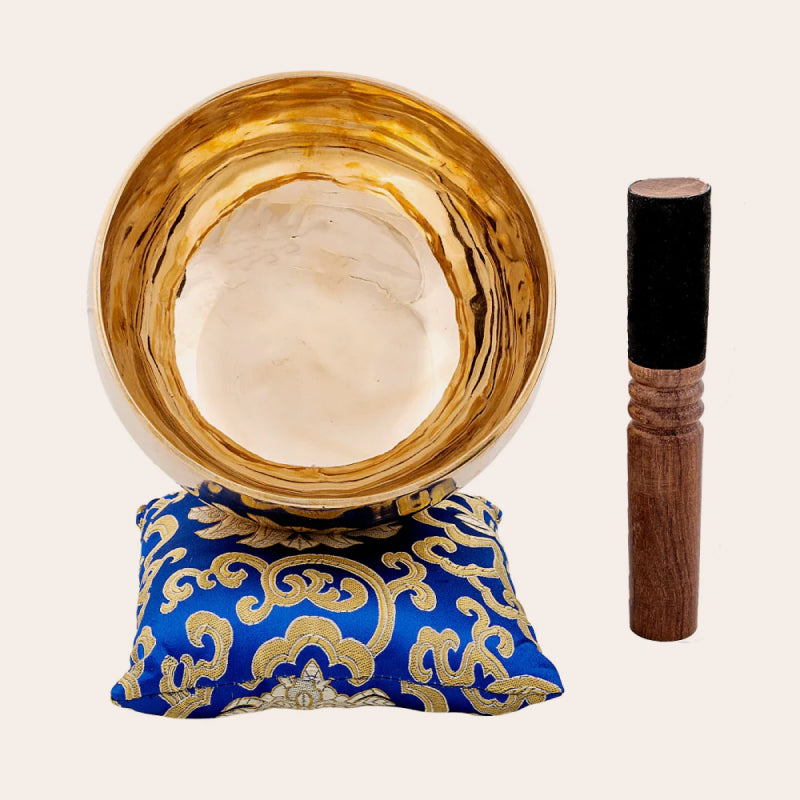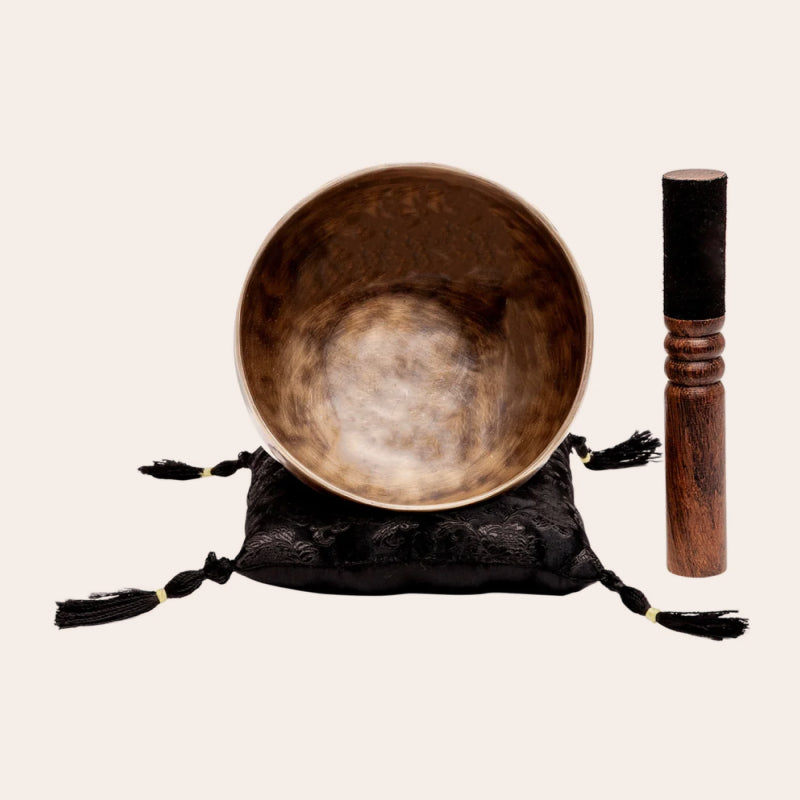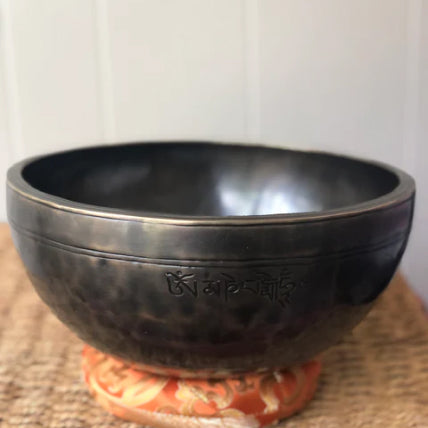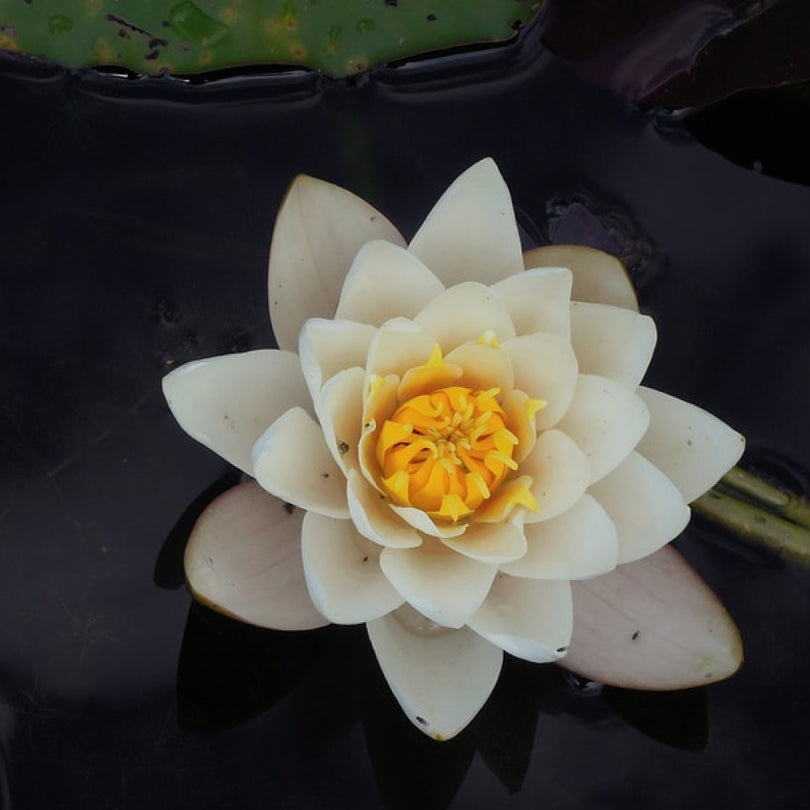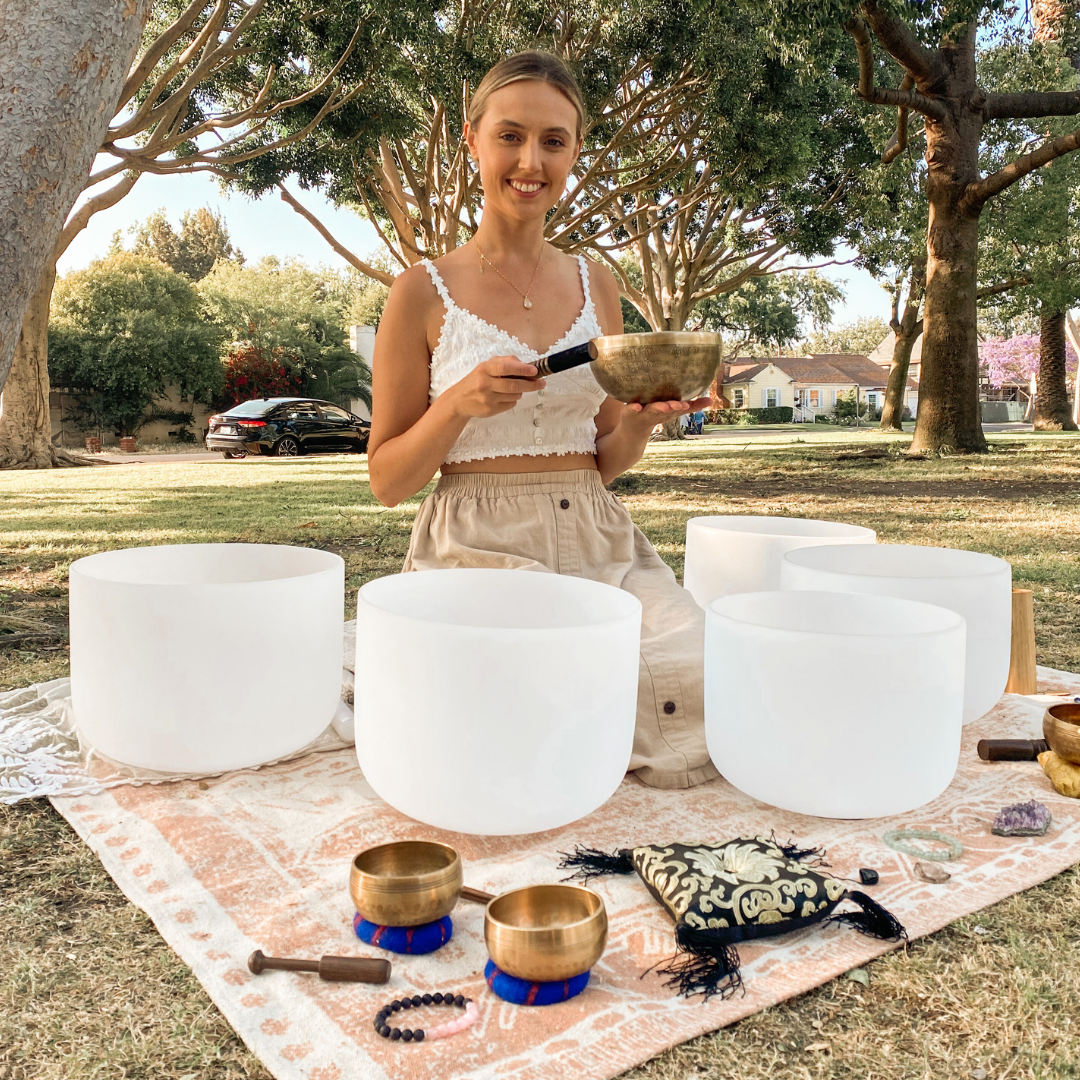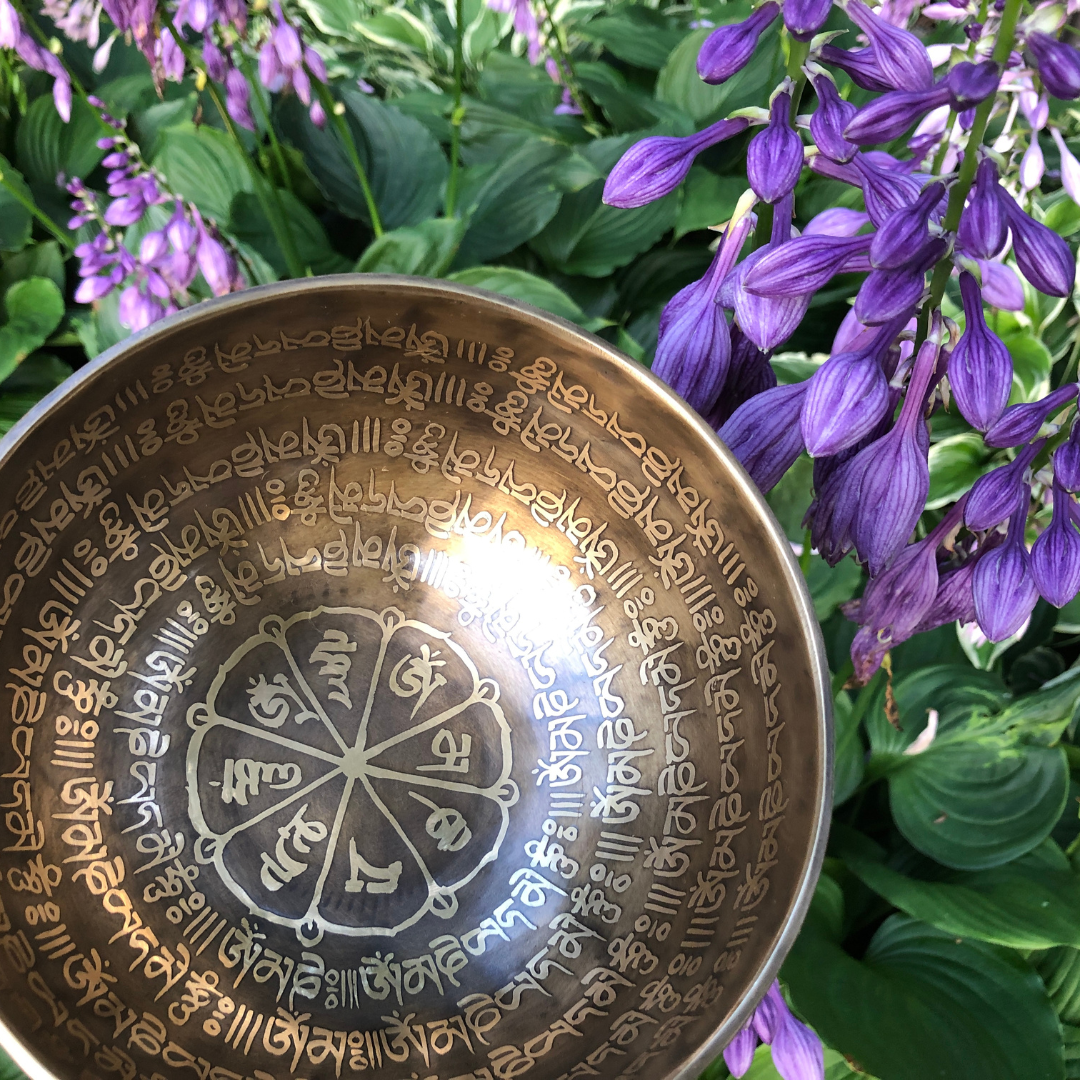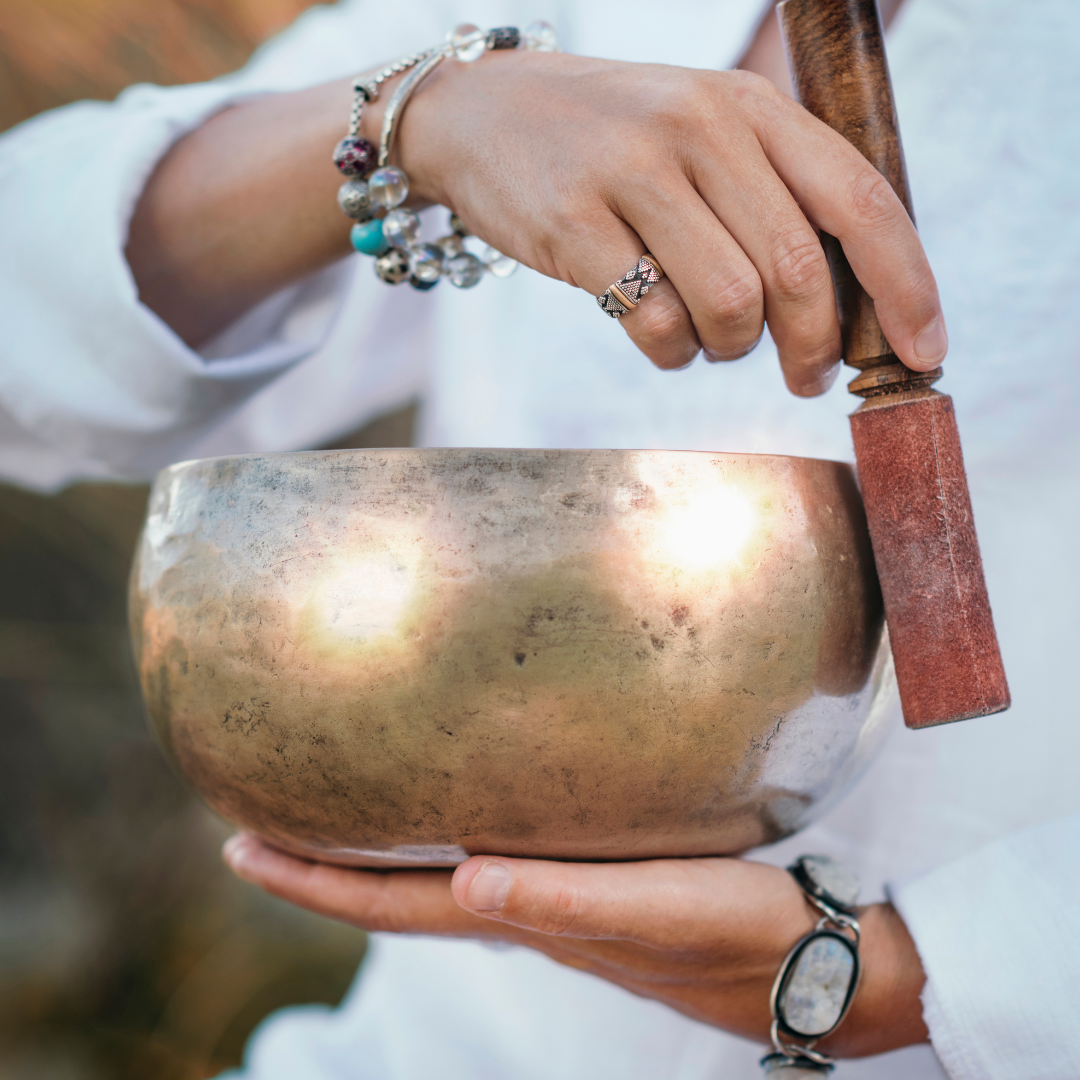Metal singing bowls have been known to spread healing energies for ages. What likely originally started as a household item, has been transformed in the last half century into a powerful healing modality.
What’s more, they’re the epitome of sound therapy. They carry something weighty – a storied history of us.
So, does that mean metal singing bowls are better than crystal singing bowls? What are the differences between metal and crystal singing bowls?
Metal and crystal singing bowls are two different standing bells used for healing therapies. While a metal sound bowl has many years of history, better durability, and complex overtones, crystal singing bowls are new, made of quartz crystal, and are available in many colors. Two very different tools that both produce hypnotic sounds.
Overview of Metal Singing Bowls Vs. Crystal Singing Bowls
Singing bowls are actually a type of inverted bell.
That’s why they’re popularly called standing bells and resting bells. These bowls were initially used for grain storage, prayers and as a household item. Today their usage has been transformed and are used for music, meditation, and therapy.
There are over 50 different singing bowl types, however, there are two main types of standing bells from which all the others originate- metal and crystal singing bowls.
Both these types can be played by striking or rotating the mallet around the rim of the bowls.
Although they work the same way, they don’t have the same characteristics. Let’s find out what they are first, then differentiate their features.
What Are Metal Singing Bowls?
A mix of different metals creates a singing bowl or standing bell. They’re popular as Tibetan bowls, Himalayan bowls, cup gong, Buddha bowls, prayer bowls, and meditation bowls.
According to history, the metals used for creating the singing bowl were an alloy of seven metals denoting seven heavenly bodies.
- Gold stands for Sun.
- Silver represents Moon.
- Copper symbolizes Venus.
- Iron embodies Mars.
- Tin signifies Jupiter.
- Lead denotes Saturn.
- Mercury (metal) depicts Mercury.
In modern times, the majority of metal singing bowls are no longer created with this auspicious blend of metals. One significant factor is that the gold and silver add cost to the person buying the bowl, but the addition of these two elements does not impact the sound quality (neither positive nor negatively). Most makers leave these elements out, and favor a bronze, or bronze allow because it produces the right sound properties needed in these healing bowls.
What Are Crystal Singing Bowls?
Standing bells made of healing crystals are called crystal singing bowls. They’re typically made from 99.9% crushed clear quartz. To derive varied shapes, quartz is heated at extremely high temperatures.
Moreover, it’s a healing crystal with high vibrations capable of cleansing everything around it. You might know of them as quartz or alchemy singing bowls too. These crystal singing cups look and sound different but can heal just like their metallic relatives.
Differences Between Metal And Crystal Singing Bowls
Now that you know the basics of both the popular varieties of cup gongs, it’s essential to understand their pros and cons. They’re crucial to help you pick the best bowl for your needs.
Let’s set them apart in depth!
History
Although most people call them Tibetan singing bowls, the earliest standing bells originate from China and Mesopotamia.
Historians say the concept of using bells for prayers and religious purposes must’ve spread out to other parts of the world like India and Japan during the age of Buddhism. That’s why you can trace the oldest metal healing bowls to 6,000 years in the Age of Gemini.
On the contrary, crystal healing bowls were invented in the late 20th century, in the Age of Aquarius. Comparatively, a crystal bowl doesn’t have any religious origins or links with different cultures around the world like the metallic ones.
Read more on the history of singing bowls if you’re hooked!
Characteristics Of Sound
Metal standing bells are different in many ways from the crystal variety, but the most significant difference is sound.
For instance, metal cup gongs of standard sizes emit frequencies between 110 Hz to 660 Hz. On the flip side, the frequencies generated by crystal sound bowls are far higher. Crystal healing bowls produce sounds between a tenth of a kilohertz to several tenths of megahertz.
Put simply, the sound of a crystal singing bowl is more profound and with higher vibrations. As a matter of fact, they sound glassy to most people.
In contrast, Tibetan bowls make a harmonious and softer sound. So, no matter how you play a crystal sound bowl, the extent of overtones won’t be as intricate as a metal healing bowl.
Another notable difference between the sounds of both bowls is vibrations of crystal bowls last longer than metal singing bowls.
Here’s a video to hear the difference in overtones of both metal and crystal standing bells:
Maintenance And Durability
Unlike crystal, metals won’t break as easily. That’s also because most metal singing bowls are a mix of several metals and not just one.
Nonetheless, metal standing bells can also crack under immense force or pressure. However, you can solder the cracks on a metal meditation bowl with metals even though the process is sophisticated.
That said, quartz standing bells aren’t exactly fragile either - they’re sturdier than ordinary crystals as they’re made at 4000 degrees in centrifugal molds. Unfortunately, they can break if you play them too loud or make extremely-high vibrations.
Cracks for crystal singing cups mean the end as they’re made of a single material. Although, glass restorers can use another material called acrylic glue to repair chipped or nicked edges in some cases.
Cost
You can get metal singing bowls for $39.97 to $475 at The Ohm Store
Depending on the size, rarity, and materials used for making the healing bowl, it can cost as low as $20 and can be as high as several thousand dollars.
In comparison, the cheapest crystal singing bowl starts around $120 and is costlier in larger sizes than its metal counterparts. However, it goes without saying there are antique metal singing bowls at higher costs too. But crystal singing bowls, on average, will be more expensive to purchase and more fragile to maintain than their metal counterparts.
Healing Powers
Metal sound bowls generate acoustic healing vibrations, while crystal alternatives do much more.
Because most crystal meditation bowls are made of quartz, they fuse acoustic and crystal healing together.
This is not a “one is better than the other'' approach. Both types of bowls have the spectacular ability to entrain brain waves. At The Ohm Store, we choose to own both types of bowls (though we don’t currently make or sell crystal bowls).
Size And Weight
While you can get small metal bowls in sizes starting at 3.5 inches, the smallest size of crystal sound bowls is 6 inches. On the higher side, you can get metal bowls in sizes up to 39 inches. But crystal sound bowls aren’t readily available above 24 inches.
Which bowl do you think is heavier when it comes to weight? The truth is, metal singing bowls may be heavier or lighter depending on the core metals used for constructing them. On the other hand, crystal sound bowls are usually heavier.
For instance, a standard 7-inch metal meditation bowl weighs 1.5 to 2 pounds, while a 7-inch crystal singing bowl weighs over 5 pounds.
Appearance
If you’re a fan of different colors, the several shades of crystal standing bells might be a good pick for you. That’s because you can get healing bowls made of quartz in multiple colors such as purple, indigo, red, orange, white, blue, and yellow.
Conversely, you can’t find metal standing bells in rainbow colors. Despite that, they’re available in gold, silver, black, and copper-red shades. In addition, these Buddha bowls come in different shapes and designs like hammering and Tibetan scripts.
Pick The Best Bowl Between Metal And Crystal Singing Bowls
Comparing metal singing bowls vs. crystal singing bowls makes one realize that both bowls have specific physical and metaphysical characteristics. Although metal bowls are older, complex, and durable, crystal alternatives are powerful.
Both types of bowls create highly resonant frequencies and healing energies. Moreover, they affect our body, chakra system, and brain differently.
But metal singing bowls are available in smaller sizes, lightweight options, and lower costs. They don’t break as easily as crystal healing bowls either.
Need help choosing? Reach out directly to us - we are here to support your decision.

